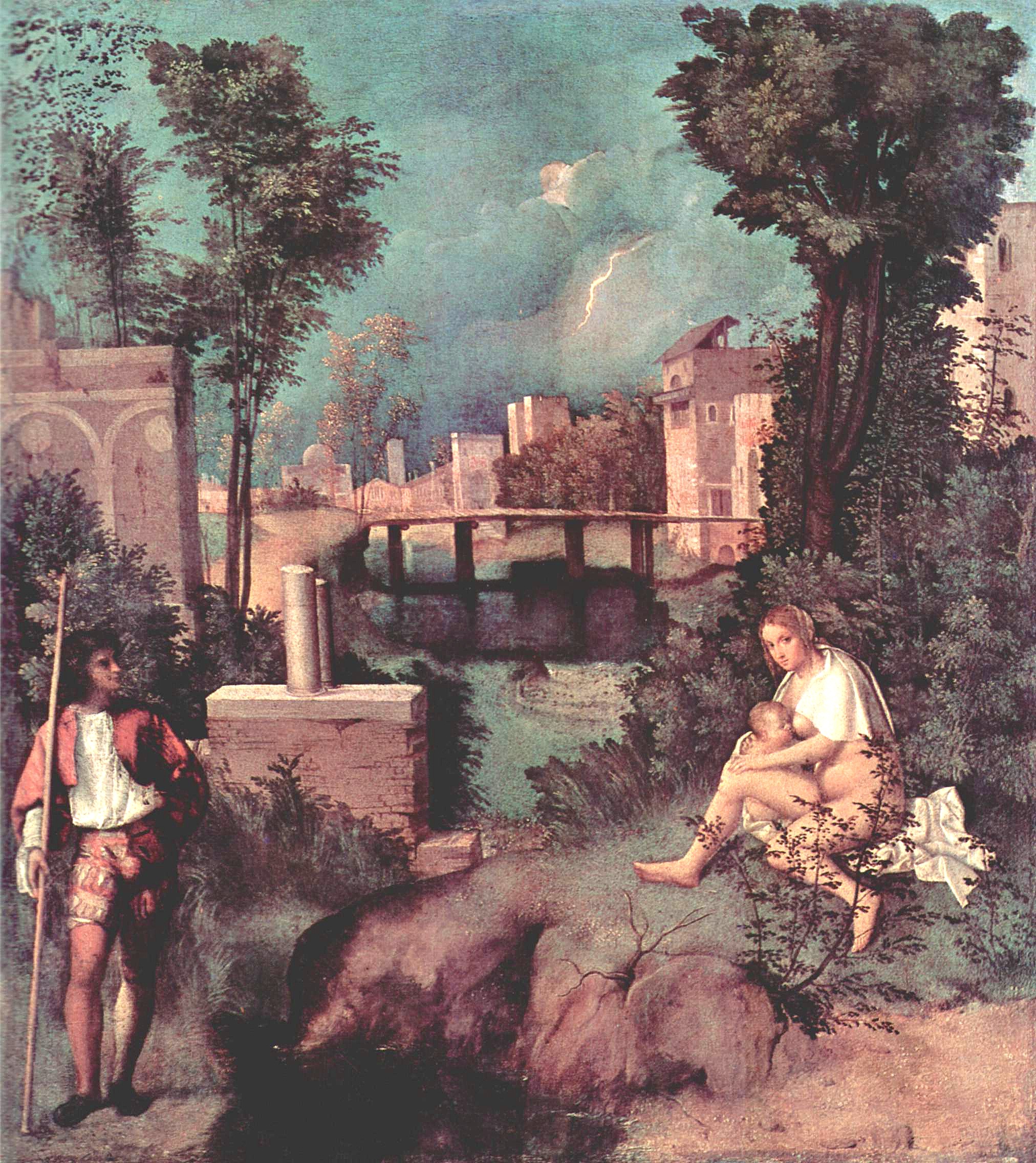- The Tempest (painting)
Infobox Painting|

title=The Tempest
artist=Giorgione
year=c. 1508
type=oil on canvas
height=83
width=73
city=Venice
museum=Gallerie dell'Accademia"The Tempest" (Italian "La Tempesta") is a famous
Renaissance painting by Italian masterGiorgione dated between 1506 and 1508. Originally commissioned by the Venetian noble GabrieleVendramin , the painting is housed in theGallerie dell'Accademia ofVenice ,Italy .Overview
"The Tempest" is considered an enigmatic work.cite book|author=Büttner, Nils|title=Landscape Painting: A History|pages=pp. 74–77|publisher=Abbeville Press Publishers|location=New York|year=2006|other=trans. Russell Stockman|isbn=0-7892-0902-0] It depicts an arcadian landscape outside a city, with a river, trees and ruins. The darkly clouded sky is lit by a flash of lightning, announcing an imminent storm. A woman, sitting on the right, breastfeeds a baby. She is nude except for a white sheet, suggestive of purity and innocence, which covers her shoulders. The round belly, full breasts and act of lactation, all suggest that she may symbolize fertility. To some commentators, however, she represents charity. The possible association with the Virgin Mary is evident.
A man, possibly a soldier, holding a long staff or pike, stands in
contrapposto on the left. He smiles and glances to the right, but does not appear to be looking at the woman. Art historians have identified the man alternatively as a soldier, a shepherd, a gypsy, or a member of a club of unmarried men.X-ray s of the painting have revealed that in the place of the man, Giorgione originally painted another female nude. To some, he represents steadfastness; they point to the pillars behind him, which often symbolize force or strength. These pillars, however, are broken—a classic symbol of death. One may also note thestork on the rooftop on the right. Storks sometimes represent the love of parents for their children.The painting's features seem to anticipate the storm. The colors are subdued and the lighting soft; greens and blues dominate. The landscape is a not a mere backdrop, but forms a notable contribution to early
landscape painting . The painting has a 'silent' atmosphere which continues to fascinate modern viewers.There is no contemporary textual explanation for "The Tempest", and ultimately, no definitive reading or interpretation. To some it represents the
flight into Egypt ; to others, a scene from classical mythology (Paris andOenone ) or from an ancient Greekpastoral novel. According to the Italian scholarSalvatore Settis , the desert city would represent theParadise , the two characters beingAdam and Eve with their sonCain : the lightning, as in ancient Greek and Hebrew times, would represent God who has just ousted them from Eden. Others have proposed a moral allegorical reading, or concluded that Giorgione had no particular subject in mind.Scholars have cited "The Tempest" as having influenced
Manet 's "Luncheon on the Grass ". [John Rewald ,"The History of Impressionism",The Museum of Modern Art , 4th revised edition 1973, (1st 1946, 2nd 1955, 3rd 1961), p.85. ISBN 0-87070-369-2.]References
Wikimedia Foundation. 2010.
